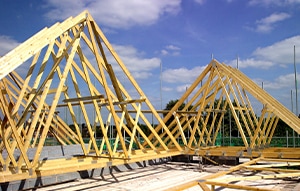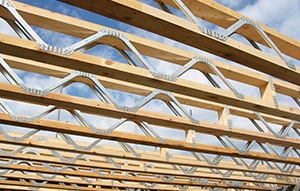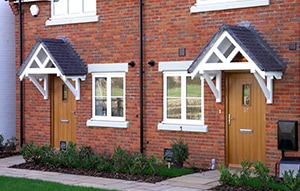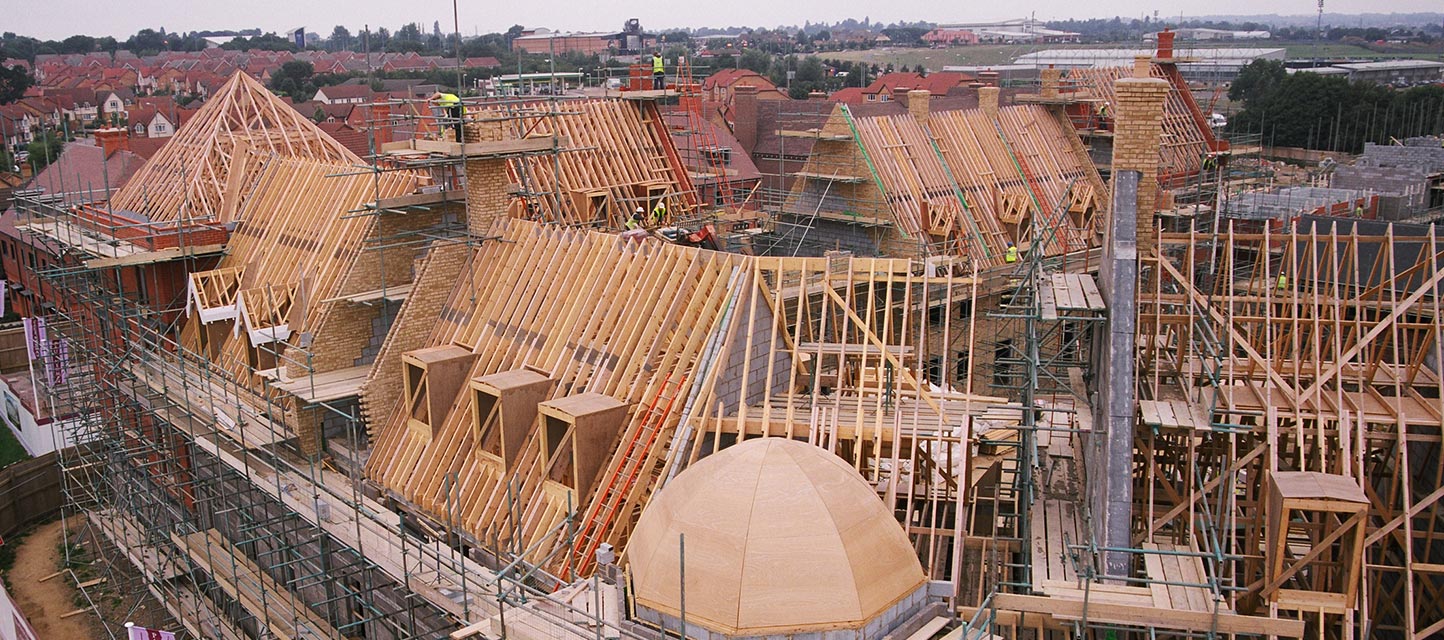A simple guide to Part Z, embodied carbon and timber construction
Many of Scotts Timber Engineering’s housebuilding clients are starting to ask questions about embodied carbon – what it is, why it’s important, and how timber construction can help. Here we try to answer the most frequently asked questions.
What is embodied carbon?
When we think about greenhouse gas emissions, we typically picture the emissions from factories and power plants, or the fumes from cars and lorries. Thankfully, there is now also growing awareness of the operational greenhouse gas emissions (often simplified to just ‘carbon emissions’) that arise from running our homes too.
What is less well understood is the hidden carbon impact of our buildings. The process of extracting and refining raw materials for construction products, transporting them, manufacturing those products, plus the construction process itself and the maintenance of a building, even its ultimate demolition or reuse, all give rise to significant amounts of carbon dioxide, a phenomenon known as ‘embodied carbon’. Every bit of a building has multiple components or processes full of embodied carbon.
In fact, according to some estimates, embodied carbon accounts for as much as 60 percent of the total emissions of some building products. For example, the production of cement – a key ingredient in concrete – can generate almost a tonne of carbon dioxide for every tonne of cement produced.
Why does embodied carbon matter?
Embodied carbon is the carbon impact that most of us don’t get to see or influence. But as we continue to build more homes and the world continues to urbanise and build new infrastructure, it’s important to consider the embodied carbon of these projects. By using materials with a lower embodied carbon footprint, we can help reduce our overall emissions and slow the pace of climate change.
As the UK Green Building Council explains:
“Consideration of embodied carbon within the built environment at the initial design and construction stages, especially by the construction and property sectors, is necessary to achieve the required greenhouse gas reductions. The relative significance of embodied carbon is increasing, as both the grid decarbonises and operational emissions decrease due to increased energy efficiency.”
How should housebuilders measure embodied carbon?
The key tool for measuring embodied carbon is the Life Cycle Assessment (LCA). Just as it sounds, this is a technique to assess the environmental impact of a product throughout its life, even including demolition and disposal. It’s best to start measuring as early as possible at planning and design stages, and to use LCAs to help with your choice of building materials – particularly structural components which are then ‘locked in’.
BS EN 15978-1 is a standard currently in development to specify the calculation method to assess the environmental performance of a building and site. There is also helpful guidance from the RICS and various embodied carbon calculators available which use a range of conversion factors to convert quantities of materials into embodied carbon figures.
Better still, ask for an Environmental Product Declaration (EPD) for your chosen construction material. This is a verified and registered document that communicates transparent and comparable information about the life cycle environmental impact of the product. According to the ASBP, at the start of 2021, there were more than 450 manufacturer-specific EPDs covering a wide range of construction products from over 80 manufacturers, plus 12 EPDs commissioned by UK trade associations.
Is there an Environmental Product Declaration (EPD) for structural timber?
Yes. Wood for Good published an EPD for structural timber in 2017. The kiln-dried timber covered by this EPD is produced from UK sourced timber and covers four softwood species – Spruce, Pine, Larch and Douglas Fir – which are used to produce a wide variety of construction products including structural timber frames, beams, joists, studs and battens, as well as doors and windows, decking, fencing, flooring and cladding.
Timber Development UK has also produced a practical guide to measuring the embodied carbon in timber construction. ‘Assessing the carbon-related impacts and benefits of timber in construction products and buildings’ (Download) explains how to account for carbon in timber buildings and EPDs by applying the latest British and European Standards.
How do you reduce the embodied carbon of buildings?
There are multiple ways for a housebuilder, architect or designer to reduce the embodied carbon in the buildings they create. The most common ways are to swap out certain building materials – for example, using structural timber instead of steel frame or brick and block construction, and wood products instead of fibreglass, GRP or other plastic composites.
Compared to other building materials, timber has a significantly lower level of embodied carbon – up to 85% lower for certain timber building systems. Using wood instead of other materials saves carbon emissions, both through the carbon captured and stored in the wood products themselves, and the avoidance of using alternative carbon-intensive materials. By specifying materials like timber with lower embodied carbon, this can make a substantial contribution to reducing carbon emissions and tackling climate change.
Read more here: https://woodforgood.com/why-choose-wood/low-carbon
What are the regulations on embodied carbon?
There are no regulations here yet. But there is a proposal to amend UK building regulations to regulate embodied carbon (‘Part Z’) which is being promoted via a private member’s bill in the House of Commons and which has the support of the Environmental Audit Select Committee. Such a move would bring the UK into line with the Netherlands, France and Sweden who already have embodied carbon regulation.
Operational carbon emissions are directly linked to operational energy use, which is already covered by Part L of the Building Regulations (with close links to Parts F on ventilation and O on overheating).
Part Z seeks to make it mandatory for embodied carbon to be assessed on all sizeable projects too – including developments of, say, 10 or more homes – as part of a comprehensive whole life carbon assessment. It would also ensure that the embodied carbon emissions are then capped on all major construction projects – initially through limits on upfront embodied carbon, but over time expanding to cover all aspects of embodied carbon. Read more about Part Z and add your support to this proposed change of regulations at https://part-z.uk/.
If you would like to speak to one of our team, simply fill out your details below and a member of our sales team will be in touch very soon to discuss your project requirements.
If you would like to speak to one of our team, simply fill out your details below and a member of our sales team will be in touch very soon to discuss your project requirements.
- Copyright © Scotts of Timber 2024
- Privacy Policy




















